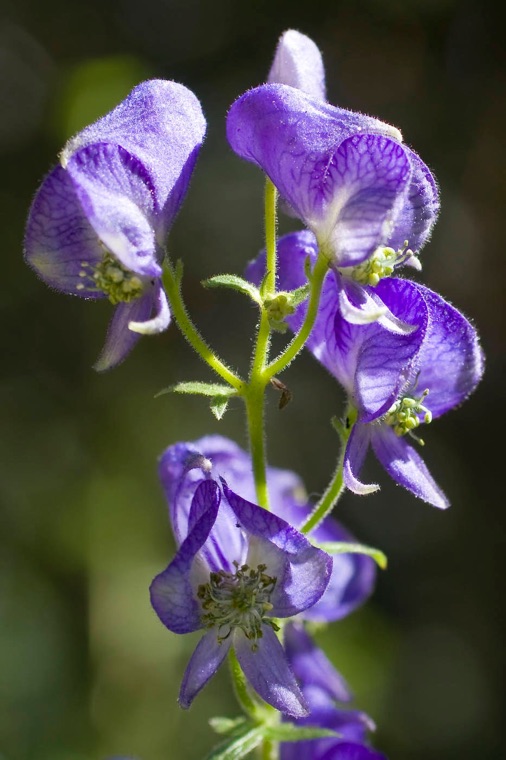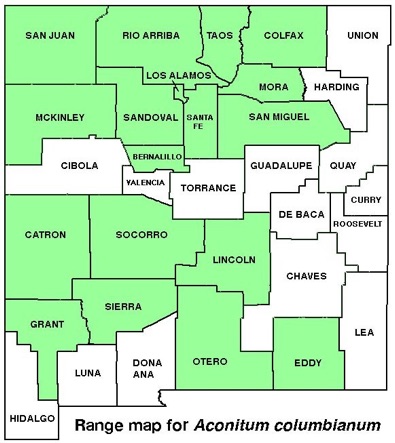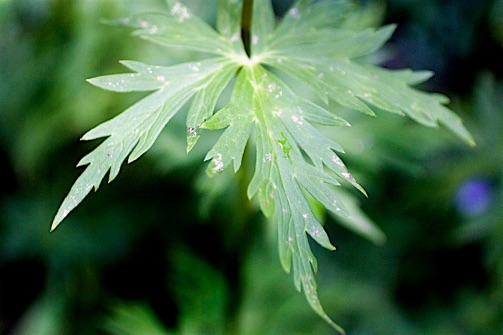WILDFLOWERS OF NEW MEXICO

Spikes of unusual, showy flowers decorate the erect leafy, hairy stems of this 1–6-foot tall plant with tuberous roots. Note the high, arching hood-like upper petal-like sepal, and the large leaves with deeply cut lobes that radiate from a central point (palmate); all parts are toxic.
FLOWERS: June–September. Spike-like cluster of blue, sometimes whitish, bilaterally symmetrical flowers, 3/4–2 inches (18–50 mm) long from top of hood to tips of lower sepals; 5 hairy, petal-like sepals with 1 upper hood, 2 rounded side sepals, 2 narrow lower sepals. The hood contains the 2 small, spurred petals with the nectaries that attract long-tongued bumblebees for pollination.
LEAVES: Alternate, becoming stemless (sessile) upward. Blade 1–6 3/4 inches long (2.5–17 cm ), 2–5 1/2 inches wide (5–14 cm), palmately divided (palm/finger-shaped) into 3–5 lobes with variable-sized teeth; blades become gradually smaller upward.
HABITAT: Moist sandy, rocky soils, wet areas, stream sides, meadows; coniferous forests.
ELEVATION: 5,900–12,000 feet.
RANGE: Rocky Mts. and westward.
SIMILAR SPECIES: Two subspecies and several regional populations that vary from 3 to 9 feet tall. NM has Aconitum columbianum ssp. columbianum. Larkspurs, Delphinium species, have similar leaves but flowers with backward pointing spurs.
NM COUNTIES: Common in NM mountains in mid- to high-elevation, moist habitats: Bernalillo, Catron, Colfax, Eddy, Grant, Lincoln, Los Alamos, McKinley, Mora, Otero, Rio Arriba, San Juan, San Miguel, Sandoval, Santa Fe, Sierra, Socorro, Taos..









MONKSHOOD
ACONITUM COLUMBIANUM
Buttercup Family, Ranunculaceae
Perennial herb
THE CONTENTS OF THIS WEBSITE ARE COPYRIGHTED AND CANNOT BE USED WITHOUT PERMISSION OF GEORGE OXfORD MILLER





















































-
1.Hood sepal (upper arrow).
-
2.Two rounded side sepals (middle arrow).
-
3.Two narrow lower sepals (lower arrow).





















• The hood contains two small, spurred petals (right arrow) with the nectaries.
• Bumblebees crawl over the numerous stamens (left arrow) to reach the nectaries.



















EMAIL ME







